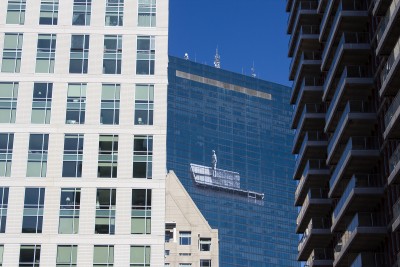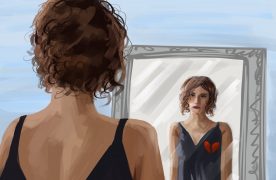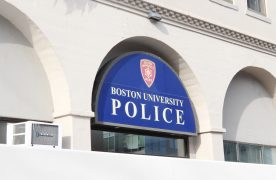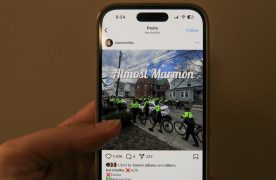
A popular mural that has become a fixture in Boston’s skyline will soon be removed, officials said.
The grayscale mural depicting a man with his hands in his pockets is currently displayed on the glass of the John Hancock Tower in Back Bay.
“Last day of the piece in Boston,” the mural’s artist, JR, wrote on his website Wednesday. “They started taking it down.”
What started out as a six-week public art program was extended to seven months because of positive feedback from the general public, said Bryan Koop, executive vice president of Boston Properties.
“For more than 40 years, 200 Clarendon has been an iconic fixture of the Boston skyline and we are thrilled to have had JR temporarily use the building as a canvas for his thoughtful piece and thrilled to be engaging Bostonians in a conversation about public art,” Koop said in a Wednesday statement. “We look forward to continuing the conversation in the future.”
JR has had his art displayed in cities worldwide including Paris and Brazil, according to his website.
Emily Abramovich, operations and program manager at the nonprofit Arts and Business Council of Greater Boston, said local art enhances creativity in the community.
“No matter what type of content or subject matter, the Arts and Business Council of Greater Boston supports public art and its ability to express the creative character of a community,” she said.
The council focuses on areas such as volunteerism, professional development and economic impacts to help encourage artists “to be able to succeed in their careers,” Abramovich said.
“Part of our outreach involves providing public artists with the resources to grow and sustain their careers, so we support all kinds of public art,” she said. “We provide … leadership counseling to artist organizations, individual artists and creative entrepreneurs.”
Several residents said local artwork should be encouraged because it adds value to the city.
Meaghan Murphy, 25, of Allston, said she hopes to see similar installations in Boston public spaces.
“The John Hancock Tower was a great way to display local art across the city,” she said. “And if that’s a rotating thing, I would totally support that.”
Adam Smith, 37, of Jamaica Plain, said art should be representative of the community.
“Art should be supported and encouraged … It should be reflective of the community … in so that there is a greater show of ownership by the community and they feel represented,” he said.
Susanne Fiedler, 69, of Kenmore, agreed that art is important for the community, but she added that any public funding for it must be placed in the context.
“If we’re talking about governmental support of art, that’s important, but in the context of priority setting for whatever the community’s needs are,” she said.
Fiedler noted that greater needs like feeding the hungry and providing health care could outweigh the public’s need for art.
“If we have the money, I am all for it,” she said. “But if we have other priorities we should be thinking about, then it should be based on that.”
Kyler Sumter contributed to the reporting of this article.













